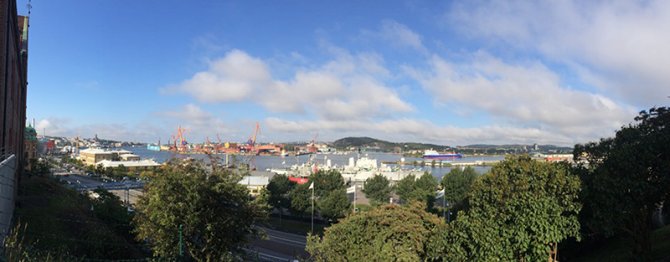
Nieuws
Sven Stremke at PECSRL conference, Sweden
From 7th to 10th of September, Dirk and Sven attended the PECSRL conference in Gothenburg/Sweden to present a paper on the PALET project. In total, there were 15 presentations on the subject of energy landscapes, in three sessions.
Abstract: Since the revival of renewable energy technologies, implementation often faces fierce opposition. To address this issue an alternative approach has been pursued, where options and consequences of multiple renewable energy technologies are revealed at the very beginning of the transition process. This research has been performed within the methodological framework of the so-called five-step approach for strategic spatial planning and landscape design. This contribution focuses on the research techniques employed during the first step of the five-step approach in the city region of Parkstad Limburg (NL). Within the first phase, energy potential mapping was conducted to identify both potentials and constraints of five renewable energy sources (Van den Dobbelsteen et al. 2011). Next, a questionnaire was employed to gather and prioritize key consideration of local stakeholders with regard to the future energy landscape. A multi-criteria decision analysis was used to create scenarios. The first, reference scenario shows the maximum capacity for renewable energy generation. The second, integrated scenario is based on the conceptual framework for the planning and design of sustainable energy landscapes (Stremke, in press) while many criteria were specified on the basis of the questionnaire and interviews. Four different types of conditions were identified, each relating to a different level of decision-making. This provided stakeholders with insight in which conditions they control and how decisions would affect the emerging energy landscape. The MCDA, in combination with EPM and stakeholder interaction, provides a solid basis for decision-making. While our study informed the political debate about realistic energy targets for the region, the results are not static. Instead, a set of interrelated tools has been developed that can be used to test and verify alternative proposals for a sustainable energy landscape in future phases of the transition process.
